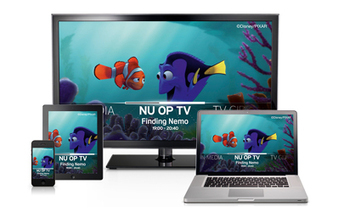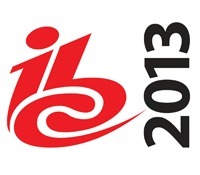 Your new post is loading...
 Your new post is loading...
How dynamic is MPEG-DASH Ecosystem after IBC 2013 ? Here is an analysis of the latest trends and an extensive industry DASH-compliant solutions directory. While most of IBC’s buzz was generated by the shiny HEVC + 4K couple, it was a good occasion to stand back from the hype and measure how one of the most important video standards (at least for the OTT world) had spread over the industry since last year. MPEG-DASH is not sexy (let’s remember that it’s basically a collection of XML schemes), it’s a bit boring (as it’s usually demonstrated with the Big Buck Bunny that you saw not less than 2.000 times) and it’s complex – but once you go past those defaults, you might find that its potential to simplify your workflows and boost the profitability of your video service is high… And that’s precisely what the industry has finally understood: video distributors want to streamline their workflows and save their storage budgets by reducing the number of output formats, they search for ways to build long term strategies with evolutive solutions – and all of this implies rolling away from proprietary ABR solutions like Smooth Streaming, HLS, HDS and the now defunct Widevine WVM proprietary packaging format (rest in peace), DASH’s first victim.
L’IBC était l’occasion de faire le point sur l’offre de plusieurs concepteurs de chipsets pour set-top-boxes. Chaque année, les gammes évoluent pour tenir compte de l’évolution des besoins et de l’environnement technologiques : la gestion du multi-écrans, le support de l’HEVC, l’arrivée de la 4K et la gestion des réseaux domestiques. Le support d’HEVC est clé pour tout fabricant de chipset car les appels d’offre des opérateurs de TV payante et d’IPTV commencent à intégrer le support d’HEVC. Ce support permet aux opérateurs d’étendre le parc de clients éligibles à l’IPTV. Pas question d’UHD dans ce cas, mais de simple SD ou HD. Comme l’HEVC réduit de 30% à 50% le débit nécessaire pour la transmission de vidéo, le bénéfice est évident pour les opérateurs. Les autres bénéfices de l’HEVC sont de réduire les coûts de CDN (Content Delivery Networks, les serveurs dans le cloud qui optimisent l’accès aux vidéos pour les consommateurs) et aussi d’améliorer les offres mobiles de consommation de vidéo en live comme à la demande. Les appels d’offre d’aujourd’hui correspondent à des déploiements qui démarreront entre fin 2014 et fin 2015 et génèreront une base installée de box qui devra tenir jusqu’à facilement 2019. Donc, il faut voir loin !
Although Ultra HD was the visible headline story from IBC2013, with demonstrations of the new format everywhere, the serious business, when you scratched beneath the surface, revolved around multiscreen TV yet again. The technologies to get multiscreen deployed and then make it a compelling user experience have dominated the last five shows, with only 3DTV offering any serious challenge for the crown before disappearing off our radar. This year the focus was on personalizing and monetizing multiscreen TV more effectively, while there is also a trend towards end-to-end multiscreen solutions (including multi-vendor pre-integrations) and managed services. A key driver for these last two trends is the need to help smaller operators into the multiscreen market.
The demonstration featured simultaneous PlayReady encryption, powered by Inside Secure’s Downloadable DRM Agent for iOS, and Verimatrix encryption from the same MPEG-DASH url delivered to both Android and iOS players from Inside Secure and NXP Software. The CENC scheme specifies standard encryption and key mapping methods that can be utilized by one or more digital rights management (DRM) and key management systems to enable decryption of the same file using different DRM systems. Such an approach supports a broader range of accessible clients from a single content stream.
Via Olivier NOEL
With all the excitement around HEVC and all the reports we have put out at Frost & Sullivan on the topic, we get asked all the time if MSOs should skip AVC and directly switch from MPEG-2 to HEVC. Why is this such an enticing notion and does the idea actually bear merit? To answer that question, first, some history is in order. Back in the nineties as North America transitioned to digital cable, MPEG-2 was the state of the art compression technology at the time. North America was ahead of the game even with HD and thus nearly all cable applications relied on MPEG-2 for SD and HD alike. But the industry paid a price for that early innovation – no sooner were they done with HD deployment than AVC broke onto the scene and fundamentally disrupted the video compression equation. Faced with a weak economical outlook (remember the dot com crash of 2002, anyone?), and having just made major investments in HD rollouts, the cable industry was unable to take advantage, in a meaningful way, the benefits offered by AVC. In contrast, as Europe began to transition somewhat later in the game, they did use MPEG-2 for SD digital cable but predominantly use AVC for HD. Fast forward to 2013, when the growth of North American cable subscribers slows and IPTV is surging in popularity with its vast array of content and the lure of rich applications enabled by bi-directional connectivity. The writing on the wall is clear to MSOs –they can transition their primary business to broadband services, or they must dramatically reinvent themselves and the user experience they offer to remain relevant as mainstream Pay TV service providers. Wherein lies the rub – how do MSOs meaningfully and strategically invest in infrastructure that will ensure they are at state of the art over the next decade?
A preview of new products, demonstrations and other important technology that is being highlighted at IBC : NEW: Security and ID for multiscreen video NEW: Online video platform developed specifically for premium content CONFERENCE PICK: ‘Broadcast, and Beyond: Reshaping the Media Ecosystem’ DEMO: Multiscreen service monitoring that boosts QoE HOT: ACCESS demonstrates premium content sharing for operator homes D-VDN enables backhaul savings for catch-up TV Multiscreen protection for streamed OTT Better business management for on-demand across all platforms Business-Integrated OTT Solution from Pilat Media
|
HEVC encoding and decoding technology is “ready for primetime,” but licensing negotiations are holding up real-world deployments.
While it was clear from walking the exhibit floor in Amsterdam that HEVC encoding and decoding technology is now “ready for primetime” as Sam Blackman, CEO of Elemental technologies put it, the licensing negotiations now underway between MPEG LA, the standardizing body, and those that would implement the patented technology into their products (consumer electronics companies and broadcast equipment suppliers), are holding back real-world deployments. According to Blackman, companies like Apple, Samsung and others now have the technology to utilize HEVC, but they don’t dare for fear of having to pay billions in licensing fees. Although there has been no official comment on the negotiations, word on the street is that MPEG LA is seeking a $20 million cap on single users, whereas they receive roughly a $7 million cap for the use of H.264 today. The big difference reflects the potential multiple uses that new IP-based video services will require in the future.
Imaging technology Beamr demonstrated a video optimisation solution at IBC 2013 that can potentially reduce bit-rates by up to 40% for streamed OTT video. Bit-rates from physical media such as BluRay discs could be reduced by up to 75%, the company also claimed. Beamr’s CTO, Dror Gill, emphasised that Beamr Video is not a new type of video compression codec: instead it controls existing video compression systems like H.264 or HEVC, manipulating the encoding process in such a way that, in effect, it lowers the threshold at which bit-rate reductions cause artefacts visible to the naked eye.
The reign of end-to-end OTT platforms is over, here comes the modular OTT Platform ! With SOA, FIMS, IMF and DASH, agility time has (almost) come... This is the report/sequel of Vimond's Industry Visionaries IBC2013 talk about “The Future of OTT Platforms: Is it Diversification or Standardization ?” with Eric Schumacher-Rasmussen, Editor of Streaming Media Magazine, and Nicolas Weil.
Version 2.0 of the DASH-AVC/264 guidelines, with support for 1080p video and multichannel audio, is now publicly available on the DASH Industry Forum (IF) website. The new guidelines includes several promised extensions, including one on HD video that moves the recommended baseline from 720p to 1080p. 720p had initially been chosen, according to the initial guidelines released in May, as a "tradeoff between content availability, support in existing devices and compression efficiency." At that time, the baseline video support used the Progressive High Profile Level 3.1 decoder and supported up to 1280x720p at 30 fps. "The choice for HD extensions up to 1920x1080p and 30 fps is H.264 (AVC) Progressive 12 High Profile Level 4.0 decoder," the new guidelines state, adding support for 4.0 decoders that was lacking in the previous set of guidelines. In addition, the guidelines also provide a way to handle standard definition (SD) content.
A preview of new products, demonstrations and other important technology that is being highlighted at IBC : NEW: Edgeware promises new solution to help scale multiscreen TV NEW: Witbe launches new QoE video robot for multiscreen testing DEMO: Advertising and alternative content insertion in ABR video HOT: Thomson shows HbbTV1.5/MPEG-DASH streaming solution CONFERENCE: ‘The Digital Fight for the Net Generation’ Testing for MPEG DASH, HbbTV and CI+ Broadpeak highlights its innovative CDN solutions
It takes a lot of confidence in the online entertainment market to devote two years and $20 million (£12.75 million) to the development of an end-to-end video platform for premium content. London-based Saffron Digital has done just that with Stage, which it describes as the industry’s first true end-to-end solution for premium OTT. It combines all the tools required to launch a multi-platform OTT entertainment service or UltraViolet storefront and is aimed at retailers, MSOs, TV broadcasters, mobile network operators and content owners that are seeking to launch new services or upgrade to the latest technology with the minimum of upfront investment. Stage encompasses a suite of products that includes MainStage for the creation of OTT services, MainStage UV for the creation of an UltraViolet storefront and BackStage, a custom content-management system (CMS). StagePlay is a device player that uses Saffron Digital’s own technology to control every key component of content delivery, ensuring the optimum user experience. StageCraft provides automated ingest, transcoding and encryption of content. - See more at: http://mesalliance.org/blog/2013/08/22/saffron-digital-delivers-stage-ott-platform-to-ibc-in-amsterdam/#sthash.iRnmHj5C.dpuf
|



 Your new post is loading...
Your new post is loading...









![[IBC 2013 Talk] The Future of OTT Platforms | Video Breakthroughs | Scoop.it](https://img.scoop.it/QcV918WTWh5B0iROqlVSxDl72eJkfbmt4t8yenImKBVvK0kTmF0xjctABnaLJIm9)





